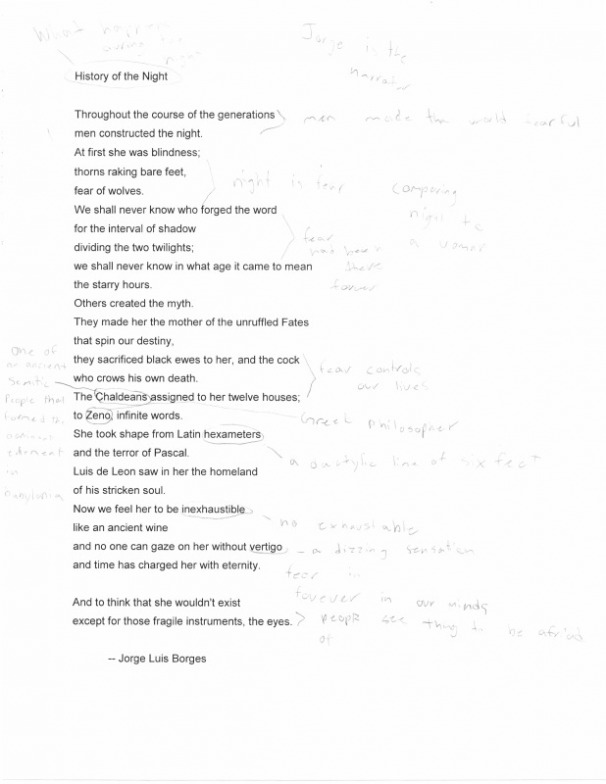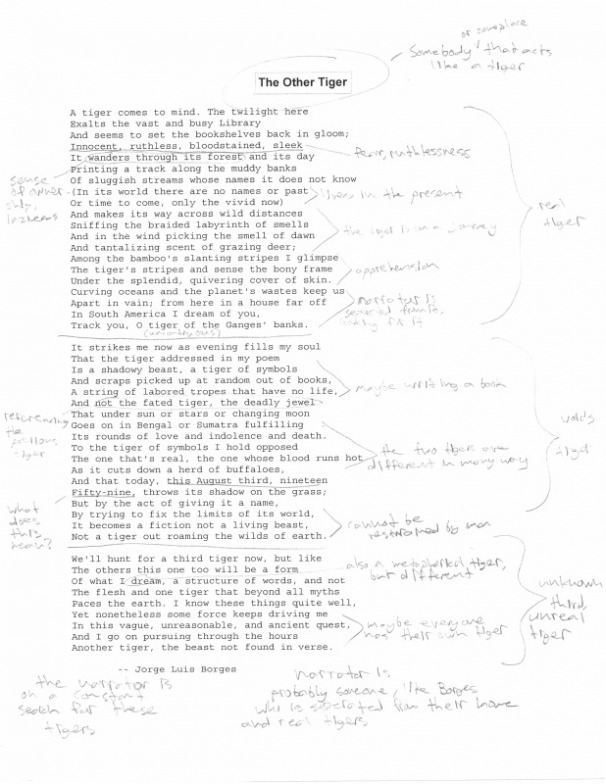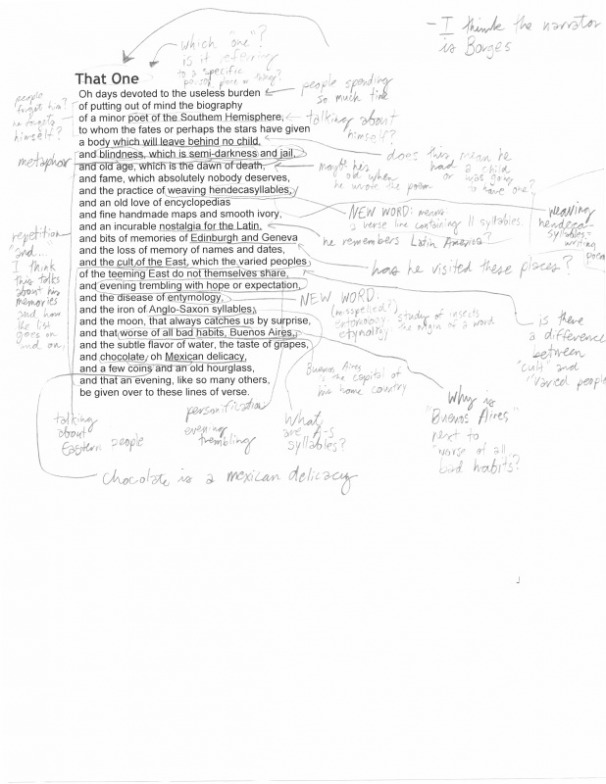Poems
History of the Night analysis by Zack Washington
Devices Used:
Refrain: repeating the idea of night is fear.
Metaphor: night is fear
Personification: give human-like qualites to night
Stanza: the is split into a "closing" paragraph
Theme: The theme of the poem is that people fear what they see.
Refrain: repeating the idea of night is fear.
Metaphor: night is fear
Personification: give human-like qualites to night
Stanza: the is split into a "closing" paragraph
Theme: The theme of the poem is that people fear what they see.
Answer to the prompt.
This poem relate to Jorge's culture because he was alive during world war 2, and war is something that people fear. The poem talks about how fear wouldn't exsist if no one had eyes, because thay fear what they see. Also Aregnitna had declared war aginst another counrty during his life.
This poem relate to Jorge's culture because he was alive during world war 2, and war is something that people fear. The poem talks about how fear wouldn't exsist if no one had eyes, because thay fear what they see. Also Aregnitna had declared war aginst another counrty during his life.
The Other Tiger analysis by Brenton Ho
Devices Used:
Refrain: repetition of the word and/or the idea of the tiger
Diction: words like ruthless, sleek, indolence, tantalizing, exalts, etc.
Metaphor: "labyrinth of smells" and also the tiger itself being compared to writing
Imagery: "...the tigers stripes and sense the bony frame under the splendid, quivering cover of skin."
Stanza: although not a rhyming poem it can be considered Stanza form because the poem is clearly split into three different sections.
Diction: words like ruthless, sleek, indolence, tantalizing, exalts, etc.
Metaphor: "labyrinth of smells" and also the tiger itself being compared to writing
Imagery: "...the tigers stripes and sense the bony frame under the splendid, quivering cover of skin."
Stanza: although not a rhyming poem it can be considered Stanza form because the poem is clearly split into three different sections.
Answer to the Prompt:
This poem demonstrates how Jorge Borges used his cultural background of both the modern, English, western world and the more secluded, Argentinian, southern world in his writings. In the theme of the poem he compares many things to the wild, maybe not the Argentine wild (Sumatra to be specific), but of those similar to it at the very least. The style in which "The Other Tiger" was written is very refined and deliberate with a hint of the raw, descriptive style that a great deal of South American poets seem to prefer. This blending of literary habits is just another example of how Borges integrated Culture into his poetry.
That One analysis by Timothy Ie
Devices Used:
Answer to Prompt:
This poem reflects and reacts to the culture from which it came because it discusses how the narrator remembers his life and what he's done in his career, even though he is suffering from perhaps blindness or old age. In one line, he mentions a "nostalgia for the Latin", possibly referring to his memories of his home land and culture, and even specific places, such as Mexico, where chocolate is considered a delicacy, and Buenos Aires, the capital of his native country. He also mentions other locations not in Latin America, such as Edinburgh, Geneva, and the East. What he is mainly stressing in this poem is the beauty of things, such as a love of encyclopedias, handmade maps, ivory, and even food.
- Metaphor (blindness is semi-darkness and jail)
- Theme (remembering his life and everything he did; nostalgia)
- Personification (evening trembling with hope or expectation)
- Tone/Mood (sadness, beauty of memories)
- Analogy (disease of "entymology" (?))
Answer to Prompt:
This poem reflects and reacts to the culture from which it came because it discusses how the narrator remembers his life and what he's done in his career, even though he is suffering from perhaps blindness or old age. In one line, he mentions a "nostalgia for the Latin", possibly referring to his memories of his home land and culture, and even specific places, such as Mexico, where chocolate is considered a delicacy, and Buenos Aires, the capital of his native country. He also mentions other locations not in Latin America, such as Edinburgh, Geneva, and the East. What he is mainly stressing in this poem is the beauty of things, such as a love of encyclopedias, handmade maps, ivory, and even food.



